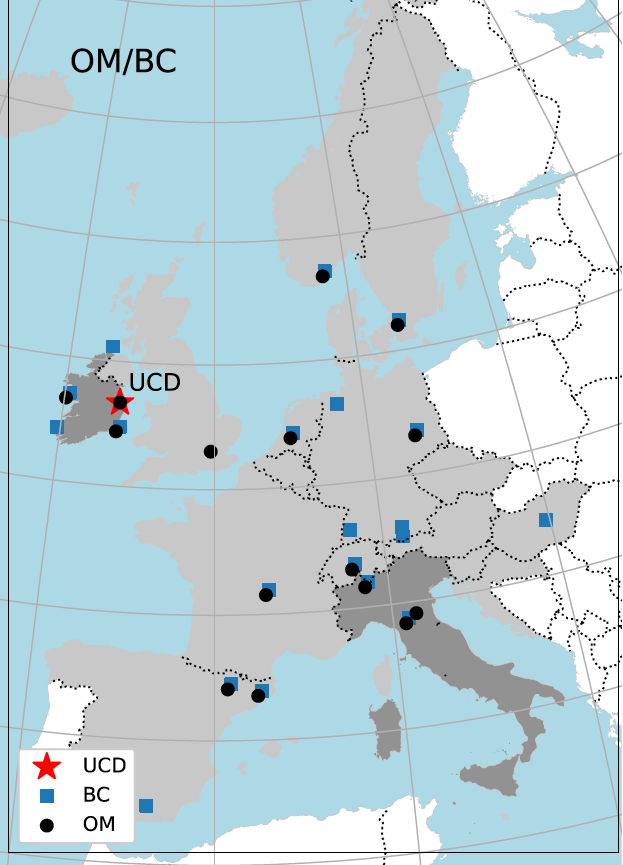Source attribution for European aerosols
Objectives and ambitions
Climate and air quality are intrinsically linked through particulate air pollutants, which include organic matter (OM) aerosol and black carbon (BC) (Bressi et al., 2021). These aerosols act as short-lived climate forcers, which can have highly variable or opposing effects on climate. Compared to the GHGs, the complexity of these aerosols and the sparsity of appropriate atmospheric data means that there are fewer studies that have aimed to link bottom-up estimates with atmospheric data. The complexity arises because atmospheric aerosols are emitted from a wide variety of natural and anthropogenic systems, and from primary and secondary processes. Therefore, new developments are needed in data analysis techniques, source attribution methods and atmospheric modelling, to move toward evaluation of bottom-up inventories. PARIS will expand the novel approach to OM source attribution demonstrated in Ireland by our team. We will develop new OM modelling techniques to determine whether inventories are consistent with the OM concentrations inferred for the major source sectors. Finally, we will explore the scope for sector-level BC emissions inference in Europe by developing a new BC inversion framework. These activities will leverage European and national atmospheric observing infrastructure, in which our team have taken a leading role (e.g., ACTRIS and the Atmospheric Composition and Climate Change network in Ireland, AC3).
Methodology

PARIS focusses on two important and uncertain subjects relating to bottom-up emission evaluation for the non-GHG climate forcers, organic matter aerosol (OM) and black carbon (BC). The first subject deals with the attribution of the sources responsible for European concentrations of OM. This WP will further develop our existing methods for OM source apportionment and apply our methods to European countries where source contributions are highly uncertain. Among others, we will determine which inventory source sectors contribute to the under- or over-estimation of observed aerosol concentrations. The second part of this work package will explore the estimation of source-specific BC emissions in Europe. We will develop a European atmospheric modelling and inversion system for the quantification of the fluxes of BC at national, sectoral level. The so derived new top-down BC estimates will be compared with bottom-up inventories.
Tasks
Organic matter aerosol source apportionment – To identify regions with prominent discrepancies between observed and simulated bulk aerosol concentration, regional modelling products will be compared to measurements. At five locations where discrepancies are identified, source apportionment of PM1 aerosol will be performed, to quantify primary versus secondary and anthropogenic versus natural flux contributions and identify major sources contributing to aerosol concentrations.
Organic matter aerosol sources utilising regional modelling – At the locations where source apportionment has been performed, an online-coupled meteorology and chemistry model that allows speciation of aerosol (including OM) will be run at high resolution (9km – 3km) over regions/periods of interest using the emission inventories.
Estimation of sector level European Black Carbon fluxes – BC source apportionment will be carried out for measurement sites and simulations will be carried out for these sites. Moreover, BC fluxes for each sector will be derived using inverse methods.





